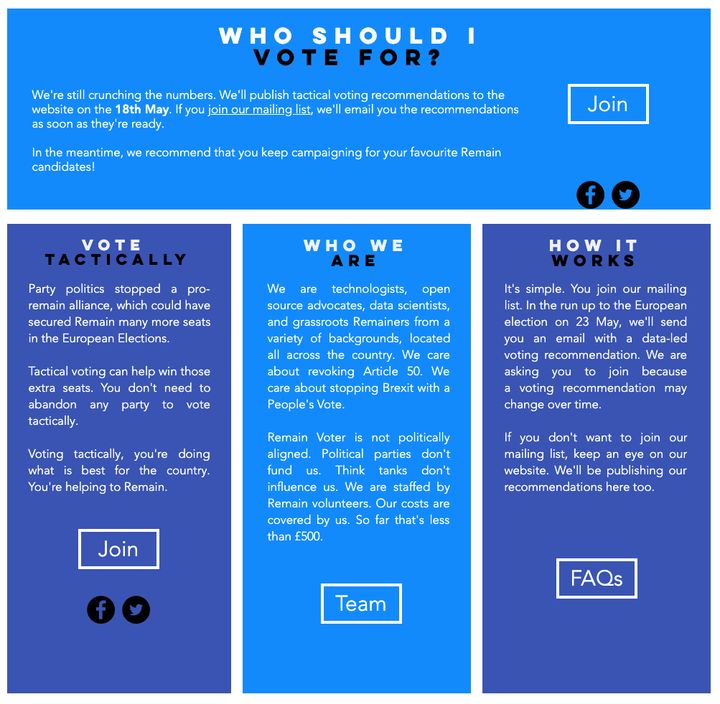A new website targeted at Remain voters has been launched by data scientists in a bid to help tactical voting against the Brexit Party.
RemainVoter.com promises to identify the best tactical voting options to stop candidates from Nigel Farage’s latest party winning a seat in the upcoming European elections.
The site uses a new mathematical model to power a tactical voting engine for the European elections, said team leader and ex-Google software engineer Cheryl Hung.
“We are entirely non-party political,” said Hung. “Our sole aim is to remain in the EU as we see the damage that leaving it will do to our country.
“We understand that party politics, political reality and technical factors prevented a pro-Remain alliance.
“We are asking people to join forces, get together and make their vote count so their voice can be heard.
“Nigel Farage might be telling everyone he has it all sewn up but together, as Remain voters, we can be a real force for good.”
RemainVoter.com was established by a small group of open source advocates, data scientists and techies with £500 and its goal is to secure Remain parties the highest number of overall seats in the European Parliament.

The group has no political ties, no links to established Remain campaigns and no other funding – and early indications are that the Lib Dems, Greens, Change UK, the SNP and Plaid Cymru will all feature in the regional recommendations.
As things stand at the moment, Hung said Remain parties could likely return just seven MEPs to Brussels – but with the website’s help, tactical voting could increase this significantly.
“We are behind all-pro Remain parties,” she said. “We are cutting through the heat and noise of party politics and letting the data provide clarity for Remain voters.
“We are conscious of the responsibility that we have, so transparency is critical.
“We use independent polling data, and the algorithms will be open sourced so anyone can verify the recommendations for themselves.”
Unlike other tactical voting websites, Remain Voter has experienced data scientists and mathematicians who have built a D’Hondt model which will openly and transparently display predicted results based on the latest polling, without party political bias.
“We are techies, open source advocates and data scientists,” said Ms Hung.
“We are not funded by think tanks or other interests. We aren’t looking for seats, jobs or a pay cheque. We are all volunteers.
“This is a grassroots approach. People have called us Led by Donkeys’ geeky little sister.”
The team is putting the finishing touches to its model, which will give voters a clear indication on which Remain political party to vote for on 23 May in all of the 12 UK regions that are sending MEPs to Brussels.
Voting guidance for each region will be published on 18 May – Remain voters are encouraged to sign up now to receive this guidance.
The site’s launch came as the shadow Brexit secretary, Kier Starmer, warned the government that two-thirds of Labour MPs would reject an exit deal that did not include a second referendum.

